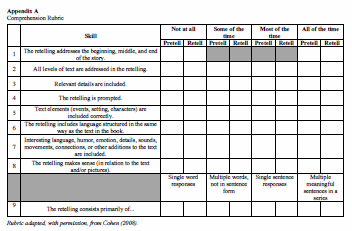The Impact of Animated Books on the Vocabulary and Language Development of Preschool-Aged Children in Two School Settings
Abstract
With the emergence of electronic media over the past two decades, young children have been found to have increased exposure to video games, computer-based activities, and electronic books (e-books). This study explores how exposure to animated e-books impacts young children’s literacy development. A stratified convenience sample (n = 24) was selected from four mixed-age classrooms at two sites: a Head Start center and a university learning center. Each site included one experimental classroom using both electronic books and traditional picture books and one control classroom using only traditional picture books. The authors noted children’s increased use of new related vocabulary after multiple exposures to the books, whether participants were in the control or the experimental group. Children’s comprehension scores also improved after multiple exposures to books in both groups. However, children’s use of “book language,” (that is, retelling with language patterns that mirror those used in the book’s text) showed variations based on school site rather than control or experimental group. Researchers noted that in some cases, the e-books themselves seemed to mediate the children’s interactions with the text similarly to the way adults facilitate interactions with traditional picture books. Overall, results suggest that animated electronic books have the potential to positively affect the literacy development of young children.
Introduction
During the past two decades, young children’s exposure to technology and electronic narratives has increased exponentially (Roberts & Foehr, 2008). Increasing numbers of preschool children have access to digital media beyond television and videos. Vandewater and colleagues (2007) found that in addition to watching television and videos and listening to music, children aged 3–6 also played video games, used the computer, and read electronic books (e-books). These children are entering preschools and schools with understanding of and experiences with a variety of digital media.
Schools, however, remain institutions where children who are “digital natives” are expected to sit still, listen, and engage with print text on a regular basis. In fact, in response to the “No Child Left Behind” Act of 2001, public schools increased their emphasis on early literacy, often dedicating half of each morning to literacy instruction in an attempt to ensure all children are reading on grade level by the end of third grade. In such a climate, there is a need for understanding the role of electronic media in preschool children’s language development and literacy skills, though little research has investigated this aspect of emergent literacy.
Static Versus Animated Images
Limited research is available that compares static visuals, such as those included in traditional picture books, with animated ones. However, research indicates that animation can help learners construct mental representations more efficiently than static images can (Höffler, Helmut, & Nerdel, 2010). One study suggests that animation benefits students more than static visuals across all levels of learning (Lin & Dwyer, 2010), but this study and all others mentioned here were conducted with learners in high school or older. Höffler and Leutner’s (2007) meta-analysis provides evidence that significant learning gains can be made with video and realistic-based animations compared with static pictures. This finding implies that animation supplies a mental model that is more easily understood than the images of static pictures. However, contrary to these findings, there is evidence that animations are not superior to static pictures (Lewalter, 2003), due in part to the fact that animation typically provides transitory information and images (Hegarty, 2004). Static pictures can be revisited repeatedly, while animated images may not have the same permanency.
E-books and Young Children
Studies in the United States and elsewhere have suggested that multimedia modes for picture books have a positive impact on literacy development (Korat, 2009; Labbo & Reinking, 1999; Smith, 2001). The work of de Jong and Bus (2004) revealed that young children capable of understanding stories can retell a story after independent experiences with the electronic form of it. Children were also found to have an understanding of e-books that is comparable to their understanding of adult-read books. In a study by Verhallen, Bus, and de Jong (2006), multimedia books were more beneficial than static books for young children learning a second language; their linguistic improvements increase significantly though repeated exposures to the multimedia book as opposed to repeated exposures to the static book. These studies also suggest a need for research to enhance pedagogical understanding in this area, especially where hard-cover picture books are used along with e-versions of the same books.
The findings reported here emerged from a three-week study of the impact of e-books on young children’s vocabulary and understanding in two diverse preschool settings. Specifically, our research question was, “How does exposure to electronic books impact preschool children’s vocabulary and understanding of the specific texts?”
Methods
Context
The study was conducted in a university laboratory school (ULS) and an area Head Start center (HS) in a mid-sized city in the southeastern United States. At each site, one experimental (e-books plus traditional picture books) and one control (traditional picture books) classroom were randomly assigned. All of the children had prior exposure to traditional books. However, we believe that e-books were new to the classroom settings in this project, though we could not ascertain whether any of the children had prior experience with e-books. Each classroom received two copies of each traditional picture book, and the experimental classrooms had access to two digital copies of each e-book. The traditional picture books were made available in a browsing basket separate from the classroom library, and children had access to them throughout the day. The e-books were accessible only during the designated research (center) time. One researcher or research assistant was assigned to each classroom for the duration of the study to encourage familiarity and comfort between the children and the researchers. Researchers were available to interact with any children interested in the books and e-books during the center time.
Sample
A stratified convenience sample (n = 24) was drawn from four preschool, mixed-age classrooms, at the ULS and HS (Table 1). Classroom teachers volunteered to participate. Kelly and Rachel taught in the experimental classrooms; Elizabeth and Lilian taught in the control classrooms. Children (referred to as focal children) were selected based on age, gender, and signed parental consent. All child participants were 4 to 5 years old (except for one child who was 3.11 years). An attempt was made to balance for gender. Children at the university lab school were predominately from middle-class families while HS students met the poverty guidelines for Head Start enrollment. Because of school absences and missing data, the findings reported here are based on 23 children (vocabulary) and 19 children (comprehension). Pseudonyms are used for all participants. Demographic information by group (experimental or control) is included in Table 2.
| Site | Number | Gender | Race | Age Range | Primary Home Language | Identified Special Needs |
|---|---|---|---|---|---|---|
Head Start |
14 |
9 Female 5 Male |
8 African-American 2 Biracial 3 Caucasian 1 Hispanic |
4.6–4.11 |
13 English 1 Spanish |
1 Speech impairment 1 Language comprehension impairment |
ULS |
10 |
4 Female 6 Male |
8 Caucasian 2 Chinese |
3.11–5.9 |
8 English 2 Chinese |
None |
| Group | Number | Gender | Race | Age Range | Primary Home Language | Identified Special Needs |
|---|---|---|---|---|---|---|
Control |
14 |
8 Female 6 Male |
6 African-American 6 Caucasian 1 Chinese 1 Hispanic |
3.11–5.9 |
12 English 1 Chinese 1 Spanish |
None |
Experimental |
10 |
5 Female 5 Male |
5 Caucasian 2 Biracial 2 African-American 1 Chinese |
4.5–5.8 |
9 English 1 Chinese |
1 Speech impairment 1 Language comprehension impairment |
Procedures
During the week prior to the study, each child was administered the Peabody Picture Vocabulary Test of Receptive Language (PPVT). Beginning the following Monday, a recursive five-day data collection schedule was followed for each of the three weeks.
Day 1: Teachers introduced and then read aloud the book for that week to the entire class. Following the read aloud, researchers invited focal children to individually use the book to retell the story. These initial retellings were labeled pretells, and audio recordings were made.
Days 2–4: All children had free access to either hard copies (control) or hard copies and e- books (experimental) of the e-books during center time in their classrooms. Field notes describing the focal children’s actions and interactions with the books and e-books were recorded. Researchers ensured that the focal children read each book at least three times over this three-day period. There was no tabulation of times each child viewed a book or e-book beyond the three per week readings to/viewings by the focal children.
Day 5: Focal children were again invited by the researchers to meet individually so that a curriculum-based vocabulary measure could be administered and children’s individual retelling could be audio taped.
The role of the researchers in the experimental classrooms was to observe and document the focal students’ interactions with the e-books, though, especially at the beginning of the research, children often involved the researcher in conversations about the e-books. Generally, the researcher sat or stood behind the children as they engaged with the e-book on the computer.
Book Selection
Three books from a pool of 38 titles with associated e-books were available to the researchers. The criteria for book selection included genre, predicted interest levels, and relation to planned curricula. Books related to holidays and religion were excluded. Researchers selected both narrative and informational books to eliminate the potential impact of knowledge of story structure on retelling. All of the print books were tactile, durable board books available in English and Spanish, though only the English versions of the books were used. Each print book had at least one interactive feature designed to engage young children in the reading process; these are described in more detail below.
Each e-book was introduced by the same opening: in an animated black and white library, a boy reaches for a book on a shelf as it magically uploads the featured book for viewing. The digital versions of these books “combine high quality animation, rich narration, and sound effects and music.”
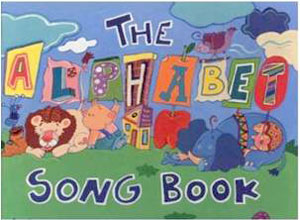 Figure 1. Cover for The Alphabet Song Book.
Figure 1. Cover for The Alphabet Song Book.
The Alphabet Song Book (2006) consists of words to an ABC song, with each letter matched with an image. The book concludes with an opportunity to manipulate magnetic alphabet letters as a book extension activity. The alphabet song starts when the book is opened so that readers can sing along. However, the song is the traditional ABC song and does not follow the text nor address the objects each letter represents. The e-book also incorporates the traditional song, but it enhances the viewer’s visual experience by highlighting and animating each object or animal as the related text is read.
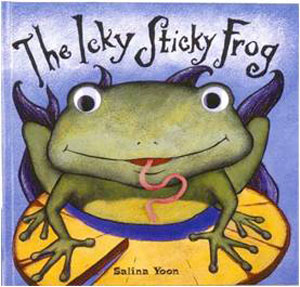 Figure 2. Cover for The Icky Sticky Frog.
Figure 2. Cover for The Icky Sticky Frog.
The cover of the Icky Sticky Frog (2000) shows a frog with a bright red, stretchable sticky tongue with a fly on the end and eyes that move when the book is shaken. The bold illustrations that spill to the edges of the book make it easy to understand the frog’s journey. The beginning-middle-ending narrative structure supports comprehension and engagement, and onomatopoeia helps keep children interested in the story. The e-book also builds suspense through the frog’s eye and tongue movements. The e-book goes beyond the scope of the traditional book by “reviewing” (via inserted pictures) the insects the frog has eaten. While the final pages of the traditional book leave the reader to decide who is eaten, the e-book clearly depicts the frog being gulped by the fish while the butterfly continues to flutter above the water.
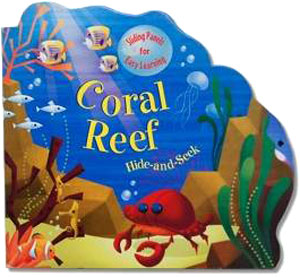 Figure 3. Cover for Coral Reef Hide and Seek.
Figure 3. Cover for Coral Reef Hide and Seek.
Coral Reef Hide and Seek (2005) is an informational book about undersea life that encourages readers to make choices in a gamelike manner. The illustrations and mechanics of the book involve readers in moving panels, lifting flaps, and pulling out tabs to discover what is hidden. The shape of the book is triangular, with the right side curvy, emulating a piece of coral. The e-book features ocean sounds and a variety of music clips and has a child narrator; this may make the challenging vocabulary more child-friendly. The text does not always exactly match the animation, and the varied visual perspectives are intended to hold children’s interest. Both versions feature an electric eel, elk horn coral, a sea horse, sea urchins, a sea anemone, and a puffer fish.
Data Sources
Data for this study came from four sources: a curriculum-based vocabulary measure, audio-taped book retellings, a teacher focus group, and researcher field notes. The vocabulary measure was developed by the researchers, based on the PPVT format, to determine children’s receptive vocabulary of particular words found in the books. All pictures in the vocabulary assessment were found in one of the three books. At the end of each week, selected children were invited to a quiet area of the room to take the three- to five-minute vocabulary test to assess any changes in their vocabularies as a result of exposure to the new books. During weeks one and two, they were asked to identify eight words by pointing to the appropriate picture (see Figure 4). For example, they were asked to “Point to the porcupine.”
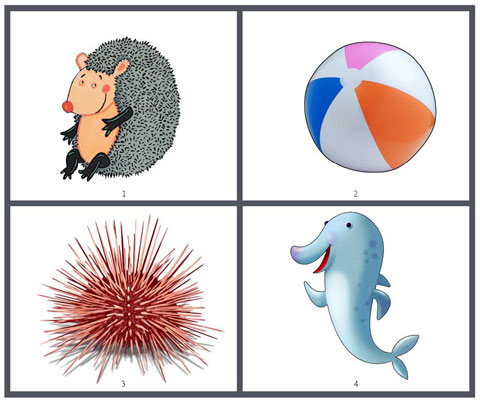 Figure 4. Example of pictures used in vocabulary test.
Figure 4. Example of pictures used in vocabulary test.
For this research, we use the term pretelling to distinguish between the child’s initial retelling of the book that was done prior to repeated engagement with the print and e-books and the retelling that was done postengagement. This process was repeated each week for a different book, and like the vocabulary assessment, took place one-on-one in a quiet corner of the room. Following the teacher’s Monday introduction of each book, focal children were asked to individually tell the story (pretelling) to the researcher. At the close of each week, focal children were asked to once again tell the story (retelling). During each process, the child was given the week’s book and invited to look at the pictures and tell the story. Pretelling and retelling were audio taped and transcribed verbatim. This allowed us to compare children’s use of language structure (syntax) and content (comprehension, temporal aspects of the story narrative, etc.) prior to and after multiple exposures to a book. Pretellings generally lasted between 90 seconds and five minutes, while retellings averaged 2–4 minutes.
Finally, children were given daily access to printed (control) or both printed and e-books (experimental) during morning center time that lasted for approximately 45–60 minutes. During this time, the researcher assigned to the classroom situated herself in the area of the books and/or computers. She interacted with the students around their book experiences and took field notes recording how children used the books, how long they remained with the books, any comments they made about the books, or any other potentially relevant observations.
Field notes of experimental classrooms included such observations as, “Students cheered after the fish ate the frog in The Icky Sticky Frog,” and “When the story was over, students asked questions such as, ‘Do frogs eat butterflies?’ The teacher helped students find answers to their questions.” In the control classrooms, the researchers were more directly involved, as they read the book to and interacted with the focal children (and others) about the book throughout center time each day for the duration of the study.
In control classrooms, the researcher was typically seated on the floor, holding the book, surrounded by and talking with the children. Field notes in the control classroom typically included items such as:
- 9:13
- One student arrived in the center and another stopped to sit on my lap. Another wanders by but stops to listen as I read. The first plugged his hears whenever the text says, “Shhhh!” or “Whoop!” Another asks what lily pads are.
- 9:50
- One student takes over reading, “Frog didn’t make a sound” and then asks, “Why did he miss?” The others in the group come up with all sorts of reasons why the frog didn’t eat the butterfly.
At the close of the study, four teachers (one from each classroom) met with researchers in a focus group for one hour. The format included questions posed to the group. Responses were audio-taped and transcribed verbatim. The questions were intended to help teachers recall their experiences with and observations of children’s use of the traditional picture and e-books, including children’s exchanges with one another during reading time, children’s preferences, change over time, etc.
Analysis of Data
Analysis of qualitative data (field notes, transcriptions of pretellings/retellings, transcriptions of the focus group, and photographs) was conducted using the constant comparative method (Lincoln & Guba, 1985) to determine emerging themes related to children’s interactions with both print and e- books and verbal exchanges related to story narratives. Children’s patterns of participation were identified using data displays and conceptual memos (Miles & Huberman, 1994).
Quantitative data (e.g., vocabulary and comprehension) were analyzed in multiple ways. Vocabulary words used in the pretellings and retellings were counted, and paired sample t-tests were calculated both for the two sites and for the two conditions (traditional books and e-books plus traditional books). Using the same data, ANCOVA tests measured the average number of vocabulary words used during retelling sessions, controlling for the average number of vocabulary words used during the pretelling sessions for both groups.
Comprehension data were entered into a rubric (Cohen, 2008), adapted with the permission of the author, that was used to analyze the transcribed audiotapes (see Appendix A). Separate analyses were also run on two rubric items of special interest. One (No. 6) evaluated how well the children’s telling of the stories included language structured in the same way as the text in the books. The other item (No. 9) evaluated the complexity of the children’s telling of the stories. The raw rubric scores were each converted to a percent (raw score/maximum score possible) to accommodate the fact that children were sometimes absent during collection of these data. Means and standard deviations were calculated and independent t-tests were used to analyze the differences in the groups.
Findings
Vocabulary Growth
Vocabulary analyses indicated that student vocabulary growth from pretelling to retelling was significant for both the control and the experimental groups. ANCOVA analysis suggests that the covariate, pretelling vocabulary was significantly related to retelling vocabulary, as would be expected. However, no significantly different effects on retelling vocabulary (F[1, 20] = 1.77, p = .199) were found between the control and experimental groups (see Table 3).
| Source | df | MS | F | p | eta2 |
|---|---|---|---|---|---|
| Pretelling Vocabulary | 1 | .674 | 22.165 | .000 | .526 |
| Treatment | 1 | .054 | 1.768 | .199 | .081 |
| Error | 20 | .030 |
Comprehension (Rubric) Analysis
Children in both the control and experimental groups across sites showed gains from pretelling to retelling in their overall ability to retell the stories. The ULS children (typically from higher socioeconomic status (SES) backgrounds) generally scored higher than the HS students who were from lower SES backgrounds (see Table 4). The findings for the control group and the experimental group were not significantly different, as shown in Table 5.
| Rubric Item | ULS N = 9 Mean (SD) |
HS N = 10 Mean (SD) |
P |
|---|---|---|---|
| Overall Pretelling | .67 (.18) | .44 (.21) | .022 |
| Overall Retelling | .80 (.12) | .49 (.19) | .000 |
| Overall Total | .74 (.12) | .46 (.19) | .002 |
| SD = standard deviation | |||
| Rubric Item | Control Group N = 10 Mean (SD) |
Experimental Group N = 9 Mean (SD) |
P |
|---|---|---|---|
| Overall Pretelling | .56 (.20) | .53 (.26) | .730 |
| Overall Retelling | .70 (.21) | .58 (.23) | .250 |
| Overall Total | .63 (.18) | .55 (.24) | .431 |
| SD = standard deviation | |||
We hypothesized that we would find differences between the groups on item No. 9, related to the complexity of the telling of the story. However, no significant differences were found (see Tables 6 and 7).
| Rubric Item | Control Group N = 10 Mean (SD) |
Experimental Group N = 9 Mean (SD) |
P |
|---|---|---|---|
| #9 Pretelling | .80 (.14) | .61 (.37) | .171 |
| #9 Retelling | .82 (.14) | .63 (.34) | .143 |
| #9 Total | .81 (.14) | .62 (.35) | .153 |
| SD = standard deviation | |||
| Rubric Item | ULS Group N = 9 Mean (SD) |
HS Group N = 10 Mean (SD) |
P |
|---|---|---|---|
| #9 Pretelling | .89 (.12) | .55 (.30) | .006 |
| #9 Retelling | .90 (.13) | .58 (.27) | .005 |
| #9 Total | .89 (.12) | .56 (.27) | .004 |
| SD = standard deviation | |||
A noteworthy difference emerged across sites, regardless of type of book used, for rubric item No. 6, which assessed how well children retold the stories, including language structured in the same way as the text in the book. The ULS group’s retelling scores were significantly higher than their pretelling scores, while the HS group’s retell scores showed no significant change (see Table 8 and Table 9).
| Rubric Item | ULS Group N = 9 Mean (SD) |
HS Group N = 10 Mean (SD) |
P |
|---|---|---|---|
| #6 Pretelling | .58 (.28) | .32 (.30) | .072 |
| #6 Retelling | .90 (.13) | .38 (.29) | .000 |
| #6 Total | .74 (.18) | .35 (.29) | .003 |
| SD = standard deviation | |||
| University Learning School (ULS) child | |
|---|---|
| Pretell | Once … once, there was a icky sticky frog. It didn’t make a sound. The fly flew by . . . out came the sticky tongue and he catched the little fly. |
| Retell | Once upon a time on a pretty blue lake and on a speckled log, there lived a quiet frog. He didn’t make a sound … a fly flew by, then out came the tongue so sticky and long, and slurped—that fly was gone! |
| Head Start (HS) child | |
| Pretell | He saw the butterfly … he just eyed that butterfly. Slurp! That frog was gone. |
| Retell | Out came his tongue, sticky and long. He just saw … he just eyed that butterfly. Gulp! … The fly—that frog was gone! |
Analysis of field notes indicated that the children were comfortable handling and using the traditional picture books. They understood the mechanics of turning pages, the location of the beginning and ending of a book, and that they could leave a book partially viewed and return later to find it lying about. However, with the animated e-books, children were far more visibly delighted by unexpected motions and sounds. They began to anticipate what was coming next and would shout out to each other that the magician was going to hop out of the book shelf or that the fish was next or that the frog was going to “slurp” the fly. Their collective anticipation was more animated and verbal than when they looked at the traditional picture books. Additionally, children more typically huddled in twos and threes around the computer, but not as much with the traditional picture books. For example, reading The Alphabet Song Book often led to children working individually with the magnetic letters; disagreements sometimes arose regarding how to use them or whether to share them. In the traditional picture book center, the children tended to ask the researcher to read to them, but with the e-books, the researcher became a facilitator on the periphery while children gathered around the computer. In fact, the children seemed to take charge of the e-book storytelling, sometimes even making up and extending parts of the stories. In general, although they were engaged in and enjoyed both the traditional picture and the e-books, the kinds of engagement varied. The traditional picture book facilitated a back-and-forth discussion with the researcher, while the animated stories tended to support children’s group reading, knowledge sharing, and collective anticipation of a story line or a forthcoming image.
Classroom Vignettes
During the course of the study it became increasingly common to find children gathered around the e-books, reading together. Although only two children were invited at one time to the computers, three to four children often joined in at both sites (see Figure 4). As Kelly said, “They were fascinated by them. Sat there … would have watched them over and over if I had let them.”
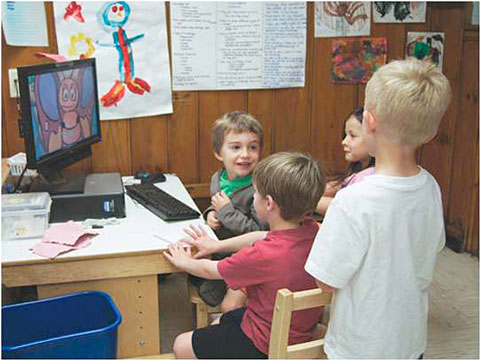 Figure 5. Children sharing an e-book.
Figure 5. Children sharing an e-book.
Teachers in the e-book classrooms reported that this pattern of participation differed in a number of ways from when children and teachers shared traditional picture books (see Figure 5).
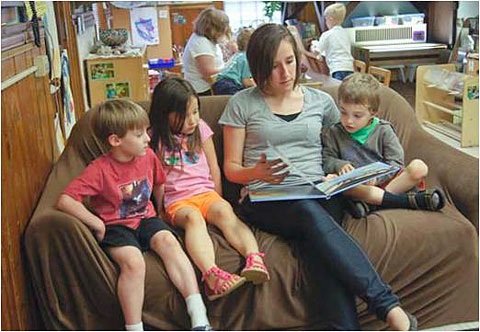 Figure 6. Teacher facilitating book interaction.
Figure 6. Teacher facilitating book interaction.
Rachel reported, “After they saw it, they would want to tell each other and what was coming next. … ‘I know. … Watch! Watch!’ ” Similarly, Kelly noted that “the whole group watched transfixed in my classroom. Then when they returned to the electronic books in smaller groups, they anticipated the next part of the book.” Rachel and Kelly both noted that the more active children seemed to remain focused for longer periods of time with e-books. “Active children were able to see and not have to sit,” Rachel commented. “They can participate more … more engaged. … More active children’s attention and focus was held longer/differently due to action and interaction.”
As e-book gatherings continued, peer partnerships formed from which rich social exchanges took place. Children often assumed the voice and intonations of an e-book’s characters, recalled the story, shouted out what was coming next before the electronic page could turn, clapped when the book ended and, as the teachers remarked, “were fascinated” by the electronic books. Rachel reported:
They would try to make their voices sound like those in the e-books as they told the story to someone else. … Express themselves better—made it easier to tell the story to another child. … They would say some of the same types of sentences.
Children also began to use the e-books and traditional picture books interchangeably, particularly during the last week of the study. Researchers and teachers observed the interplay between the two forms of text; typically children would take the traditional picture books to the computer table as referents. As Kelly commented:
The e-books really reinforced what was in the hard-back book; after they watched the e-version they could go back to the hard book and the ones [children] who had [strong] auditory learning styles could look at the book and go, “OK, this is what this is saying.” They were able to look at the pictures and relate to it that way.
She added that one child “went from computer to book to tell it back to himself, over and over, like he was reading—but he can’t do that yet.” Similarly, Rachel reported, “They liked to follow it [electronic story]. It made it easier for them to ‘read’ it. It made them feel proud of themselves even before turning the page.”
Children were also observed using the language and associated structures of the texts during play and other learning experiences in all four classrooms. For example, children asked for “eels” (mentioned in the sea life book) to be added to their ocean dramatic play area, used “jester” and “juggling” as words that began with “J” during circle time, and referred to some objects as “icky” or “icky sticky.”
Limitations
Conditions outside our control may have affected this research. Direct comparisons of experimental and control classrooms are inevitably confounded by the variation in teachers. In addition, while data from all but one child were included in the analysis of the vocabulary assessment, absenteeism among the focal children, particularly those at the HS setting, led to exclusion of five of the 24 children from the comprehension data analysis. Another potential limitation was the timing of the teacher focus group, which were held several weeks after the end of the study because of scheduling conflicts. The gap in time between the conclusion of the study and convening of the teachers may have impacted what they reported in the focus group. Finally, this study took place across three weeks. Given its brief duration and the small sample, findings cannot be generalized to other settings.
Discussion and Implications
The findings from this pilot study point to the possibility that e-books can play an important role in young children’s vocabulary development. Children in this study demonstrated significantly increased use of relevant vocabulary after multiple exposures to books, regardless of whether they had access to traditional books or e-books. It appears that increased exposure to books, whether traditional picture books or e-books, contributed to children’s continuing vocabulary growth. These results suggest that e-books may be as effective as an interactive teacher-led read aloud regarding potential to reinforce children’s vocabulary learning. It seems likely, then, that an e-book could be an appropriate substitute for an interactive read aloud, thus providing teachers with more time to attend to other instructional needs that cannot be addressed by digital technology.
Rubric scores indicated that children’s understanding of the content also improved after multiple exposures to books, whether in traditional picture book or e-book format. The children’s adoption of “book language” (i.e., retelling with language patterns that mirror those used in the book’s text), showed some variations based on school site rather than type of book. Children at the ULS site included examples of book language in their retellings much more consistently than did children at the HS site, prompting us to question whether there may be a relationship between socioeconomic status and young children’s use of book language.
The e-books created contexts in which children assumed a stance of “self as reader.” This position was different from their exchanges with the traditional picture books read to them by teachers. E-book reading was characterized by joint attention, intersubjective exchanges, and children’s active reading rather than a more passive stance while listening to the traditional books. Further, children demonstrated a use of the e-books not anticipated by the researchers. For some children, the e-books appeared to function as a tool for traditional picture book viewing. This “toggling” of e-books and traditional picture books may have contributed to some children viewing themselves as competent readers in a way they had not yet done with traditional picture books.
It was evident that, much as adults mediate children’s interactions with traditional picture books, the e-books began to mediate the children’s interactions with texts. A number of children engaged with the e-books much differently than they did with the traditional picture books; we are intrigued by the idea of looking more closely at which children gravitate toward them.
More studies are needed to understand the potential contribution of e-books to children’s early literacy development. In particular, the ways in which this mode may augment teacher instruction is an important issue to investigate. The findings from this study suggest that young children’s vocabulary development improved when using e-books, as with traditional books, but less is understood about their comprehension and the interplay of electronic and traditional picture books in early literacy development. Specifically, we wonder if e-book use may impact specific aspects of language development (e.g., understanding of and use of verbs) more than others. The field would benefit from additional research in these areas and the replication of studies, such as this pilot, with larger sample sizes across a variety of school contexts.
Children’s Literature Cited
The alphabet song book. (2006). Inglewood, CA: Piggy Toes Press. E-book retrieved from http://www.movingpicturebooks.com/downloads/the-alphabet-songbook.php
Bentley, Dawn. (1999). The icky sticky frog. Santa Monica, CA: Piggy Toes Press. E-book retrieved from http://www.movingpicturebooks.com/downloads/the-icky-sticky-frog.php
Coral reef: Hide-and-seek. (2005). Inglewood, CA: Piggy Toes Press. E-book retrieved from http://www.movingpicturebooks.com/downloads/coral-reef.php
References
Cohen, Robin. (2008). Developing essential literacy skills: A continuum of lessons for grades K–3. Newark, DE: International Reading Association.
De Jong, Maria T., & Bus, Adriana G. (2004). The efficacy of electronic books in fostering kindergarten children’s emergent story understanding. Reading Research Quarterly, 39, 378–393. doi:10.1598/RRQ.39.4.2
Hegarty, Mary. (2004). Dynamic visualizations and learning: Getting to the difficult questions. Learning and Instruction, 14, 343–351. doi:10.1016/j.learninstruc.2004.06.007
Höffler, Tim M.; Helmut, Prechtl; & Nerdel, Claudia. (2010). The influence of visual cognitive style when learning from instructional animations and static pictures. Learning and Individual Differences. 20, 479–483. doi:10.1016/j.lindif.2010.03.001
Höffler, Tim N., & Leutner, Detlev. (2007). Instructional animation versus static pictures: A meta-analysis. Learning and Instruction. 17, 722–738. doi:10.1016/j.learninstruc.2007.09.013
Korat, Ofra. (2009). The effects of CD-ROM storybook reading on Israeli children’s early literacy as a function of age group and repeated reading. Education and Information Technologies, 14, 39–53. doi:10.1007/s10639-008-9063-y
Labbo, Linda D., & Reinking, David. (1999). Negotiating the multiple realities of technology in literacy research and instruction. Reading Research Quarterly, 34, 478–492. doi:10.1598/RRQ.34.4.5
Lewalter, D. (2003) Cognitive strategies for learning from static and dynamic visuals. Learning and Instruction, 13, 177–189. doi:10.1016/S0959-4752(02)00019-1
Lin, Huifen. & Dwyer, Francis M. (2010). The effect of static and animated visualization: A perspective of instructional effectiveness and efficiency. Educational Technology Research and Development, 58, 155–174. doi:10.1007/s11423-009-9133-x
Lincoln, Yvonna S., & Guba, Egon G. (1985). Naturalistic inquiry. Newbury Park, CA: Sage.
Miles, Matthew B., & Huberman, A. Michael. (1994). Qualitative data analysis: An expanded sourcebook (2nd ed.). Thousand Oaks, CA: Sage.
Roberts, Donald F., & Foehr, Ulla G. (2008). Trends in media use. Future of children, 18(1), 11–37. doi:10.1353/foc.0.0000
Smith, Cynthia R. (2001). Click and turn the page: An exploration of multiple storybook literacy. Reading Research Quarterly, 36, 152–183. doi:10.1598/RRQ.36.2.3
Vandewater, Elizabeth A.; Rideout, Victoria J.; Wartella, Ellen A.; Huang, Xuan; Lee, June H.; & Shim, Mi-suk. (2007). Digital childhood: Electronic media and technology use among infants, toddlers, and preschoolers. Pediatrics, 119, e1006–e1015. doi:10.1542/peds.2006-1804
Verhallen, Maria J. A. J.; Bus, Adriana G.; & de Jong, Maria T. (2006). The promise of multimedia stories for kindergarten children at risk. Journal of Educational Psychology, 98, 410–419. doi:10.1037/0022-0663.98.2.410
Author Information
Amy D. Broemmel is associate professor of elementary and reading education at University of Tennessee. Dr. Broemmel works with cohorts of graduate teaching interns during their year-long internship and teaches courses in elementary and literacy education. Her research focuses on teacher development and the use of trade books in the classroom.
Amy D. Broemmel
Associate Professor
University of Tennessee
Theory & Practice in Teacher Ed
Knoxville, TN 37996-3442
broemmel@utk.edu
865.974.4225
Fax: 865.974.6302
Mary Jane Moran is an associate professor in the Department of Child and Family Studies, The University of Tennessee. She teaches courses in contemporary issues in education, early childhood education, and collaborative action research. Her research interests include the education of teachers as classroom researchers, the use of visual literacies as tools for developing critical thinking among teachers, and the design of situated professional programs framed by the creation of communities of practice.
Deborah A. Wooten is associate professor of reading education at University of Tennessee. Dr. Wooten's research focuses on using children's literature to teach comprehension and higher order thinking skills as well motivating and engaging students to read and want to read.

